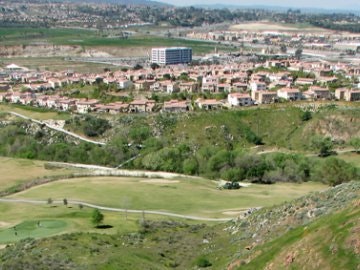Preserve Habitat
Native landscapes have been fragmented and dramatically reduced in size. Clearly, the most pressing threat to habitat is conversion to other land uses. Local native habitat lands are also some of the most potentially valuable real estate properties in the United States. As we come to understand the relationship between land use, transportation, and the environment, we must seek new ways to grow.

How do we provide homes and food for people, and at the same time, retain habitat for wildlife?
Sustainable development = Using land efficiently
Communities must plan land use based on current resource data and scientific understanding. Then, communities must use land efficiently, directing urban development in ways that preserve important natural areas and prime farmlands.
This is where community support is essential. You can help.
Riverside County is coordinating regional planning efforts to guide future land use decisions and to locate future transportation corridors. Large blocks of habitat with threatened and endangered species are prioritized in a Multi-Species Habitat Conservation Plan (MSHCP). Eventually, when adequate funding becomes available, we expect those prioritized native habitats will be purchased and preserved. Blueprint for Tomorrow is the Integrated Project for Riverside County. Information about that planning process can be accessed at Riverside County Integrated Project.
The Southern California Association of Governments (SCAG), is inviting public participation in creating a vision for the future. Their planning project, Southern California Compass, asks you to participate in public workshops that allow you to distribute home and jobs across the region, decide where transit lines should go, what new roads are needed, and what places should be preserved as parks.
There are several things you can do to get involved right now.
Municipalities are also reevaluating their growth plans. Current planning processes involve broad partnerships of landowners, government agencies, and conservationists. Everyone is encouraged to participate in planning and preservation efforts.
Some land conservation organizations work to acquire and preserve important properties. If you would like to help, join a local conservancy and volunteer, such as the Riverside Land Conservancy (RLC). If you own land that you would like to see preserved, consider creating a conservation easement or donating to a local land conservancy.
Planning Strategies

Prevent habitat fragmentation. Isolation of habitat areas can be prevented by planning for corridors (connections) between pockets of habitat and between different types of habitat. Corridors provide wildlife room to roam for access to food, territory, and mating. A broad range of habitat is necessary for the dispersal (gene flow) of plants and animals. A decrease in dispersal can lead to excessive inbreeding, smaller populations, and lower genetic diversity. These factors lead to extinction of species.
There are many planning strategies that can be used by governments and developers to better blance the demands of growth with habitat preservation:
- Prohibit construction in and near waterways.
- Prevent the filling of tributaries, including dry washes and arroyos.
- Sustainable development prohibits encroachment on important native landscapes and dedicates land for adequate buffers, especially around waterways.
- Prevent urban sprawl: dispersed, auto-oriented, low-density growth.
Communities can reduce demand for urban land by practicing sustainable development, Smart Growth, which directs development in ways that preserve native habitats and important farmlands.
Learn more about Smart Growth and quality of life considerations in the Urban Areas land use section.
